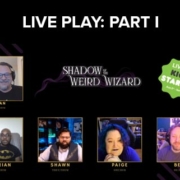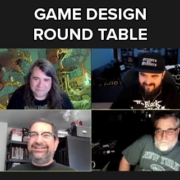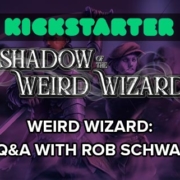Enjoy Episode 2 of Sage Dan Heinrich’s Weird Wizard live play with Adrian, Shawn, Paige, and Ben as they navigate the Quick Play adventure.
Find out the latest news and releases for Shadow of the Demon Lord and Godless from Schwalb Entertainment.
We did an impromptu play through of the quick play rules for Shadow of the Weird Wizard, loosely following the adventure that is included and even more loosely following the rules :). We hope that everyone finds the video as fun to watch as we had playing the game!
Rob met up with some dear friends in the gaming business, Chris Pramas, Stephen Radney-MacFarland, and Jerry LeNeave and spent the hour talking about what goes into building games, testing, and more.
Horror of Fangstone Mine is an adventure for expert characters, the fifth chapter in the Thought & Memory Saga.
Why should you check out Weird Wizard? Is it different from Shadow of the Demon Lord? What does the future hold for the game beyond the Kickstarter? Who does Rob hold in most high esteem?
Get the answers to these questions and more!





